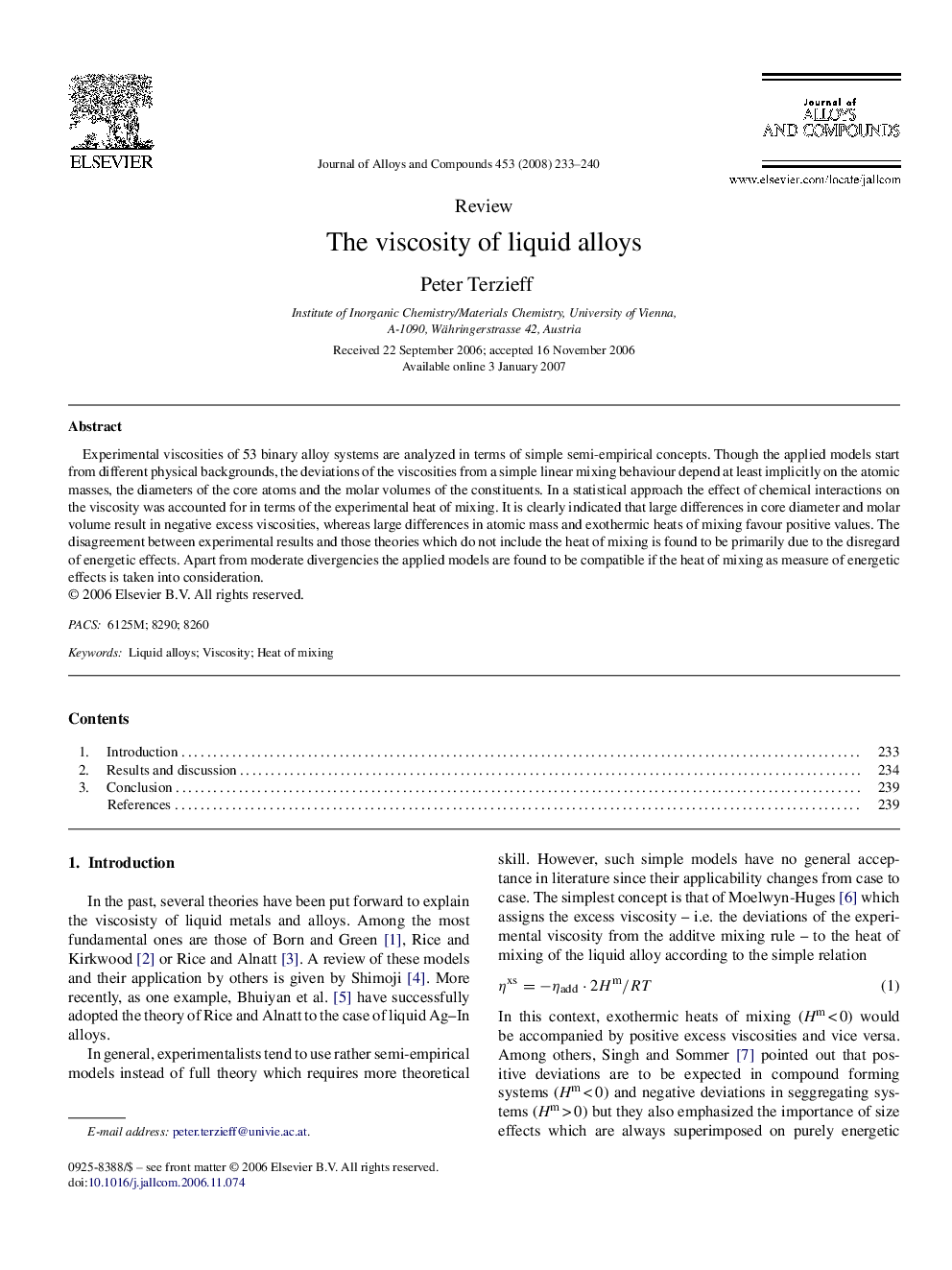| Article ID | Journal | Published Year | Pages | File Type |
|---|---|---|---|---|
| 1624883 | Journal of Alloys and Compounds | 2008 | 8 Pages |
Experimental viscosities of 53 binary alloy systems are analyzed in terms of simple semi-empirical concepts. Though the applied models start from different physical backgrounds, the deviations of the viscosities from a simple linear mixing behaviour depend at least implicitly on the atomic masses, the diameters of the core atoms and the molar volumes of the constituents. In a statistical approach the effect of chemical interactions on the viscosity was accounted for in terms of the experimental heat of mixing. It is clearly indicated that large differences in core diameter and molar volume result in negative excess viscosities, whereas large differences in atomic mass and exothermic heats of mixing favour positive values. The disagreement between experimental results and those theories which do not include the heat of mixing is found to be primarily due to the disregard of energetic effects. Apart from moderate divergencies the applied models are found to be compatible if the heat of mixing as measure of energetic effects is taken into consideration.
